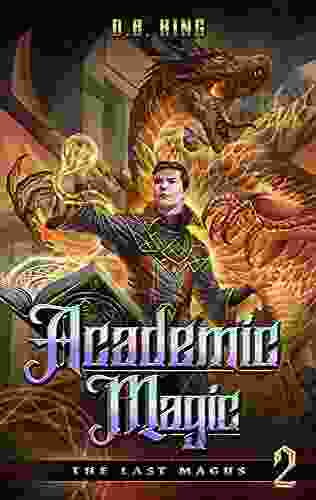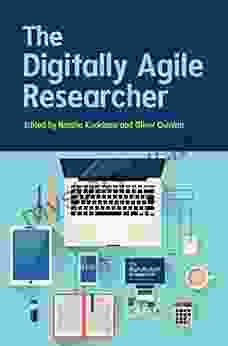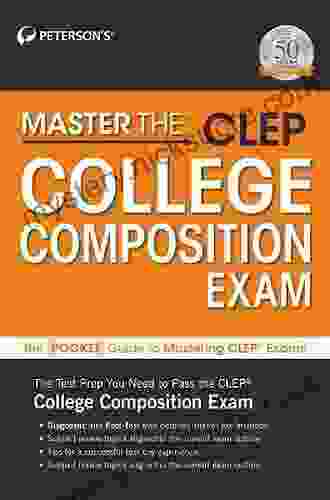Anomaly Collider Physics and the Quest for New Phenomena at Fermilab

4.6 out of 5
| Language | : | English |
| File size | : | 2498 KB |
| Text-to-Speech | : | Enabled |
| Screen Reader | : | Supported |
| Enhanced typesetting | : | Enabled |
| Word Wise | : | Enabled |
| Print length | : | 303 pages |
The Standard Model of particle physics is a remarkably successful theory that describes the fundamental building blocks of matter and the forces that act between them. However, the Standard Model is incomplete. It does not explain the existence of dark matter or dark energy, and it does not provide a unified description of all the forces of nature.
Anomaly collider physics is a powerful tool for searching for new phenomena beyond the Standard Model. Anomalies are deviations from the predictions of the Standard Model. They can be caused by new particles, new forces, or new interactions. By studying anomalies, physicists can learn about the nature of the universe and the fundamental laws of physics.
Fermilab is a world-renowned center for particle physics research. Fermilab's accelerators produce some of the highest-energy particle beams in the world, which makes it possible to search for new phenomena that are beyond the reach of other experiments.
In recent years, Fermilab has been at the forefront of anomaly collider physics. The Tevatron collider, which operated at Fermilab from 1983 to 2011, produced a number of anomalies that are still being studied today. The Large Hadron Collider (LHC) at CERN is now the world's highest-energy collider, but Fermilab continues to play a major role in LHC research.
Fermilab scientists are currently involved in a number of experiments that are searching for new phenomena beyond the Standard Model. These experiments include the CMS experiment at the LHC, the Muon g-2 experiment at Fermilab, and the Deep Underground Neutrino Experiment (DUNE) at Sanford Underground Research Facility in South Dakota.
The CMS experiment is one of the two general-purpose detectors at the LHC. CMS is designed to search for new particles and new forces that are produced in high-energy proton-proton collisions. The Muon g-2 experiment is a precision measurement of the magnetic moment of the muon. The muon is a subatomic particle that is similar to the electron, but it is heavier and has a longer lifetime. The magnetic moment of the muon is a fundamental property of the particle, and any deviation from the Standard Model prediction could be a sign of new physics.
The DUNE experiment is a next-generation neutrino experiment that will be located in the Sanford Underground Research Facility in South Dakota. DUNE will study the properties of neutrinos, which are subatomic particles that have no electric charge. Neutrinos are among the most abundant particles in the universe, but they are also very difficult to detect. DUNE will use a massive underground detector to study neutrinos from a variety of sources, including the sun, the atmosphere, and supernovae.
The quest for new phenomena beyond the Standard Model is one of the most exciting and challenging areas of physics research today. Fermilab is at the forefront of this research, and its scientists are working to uncover the mysteries of the universe.
Anomalies in the Standard Model
The Standard Model of particle physics is a remarkably successful theory that describes the fundamental building blocks of matter and the forces that act between them. However, the Standard Model is incomplete. It does not explain the existence of dark matter or dark energy, and it does not provide a unified description of all the forces of nature.
Anomalies are deviations from the predictions of the Standard Model. They can be caused by new particles, new forces, or new interactions. By studying anomalies, physicists can learn about the nature of the universe and the fundamental laws of physics.
There are a number of anomalies that have been observed in the Standard Model. These anomalies include:
- The muon g-2 anomaly: The magnetic moment of the muon is slightly larger than the Standard Model prediction.
- The dark matter anomaly: The observed amount of dark matter in the universe is much larger than the Standard Model prediction.
- The dark energy anomaly: The universe is expanding at an accelerating rate, which is not explained by the Standard Model.
These anomalies are a challenge to the Standard Model. They suggest that there is new physics beyond the Standard Model that we do not yet understand.
The Quest for New Phenomena
The quest for new phenomena beyond the Standard Model is one of the most exciting and challenging areas of physics research today. Fermilab is at the forefront of this research, and its scientists are working to uncover the mysteries of the universe.
There are a number of different ways to search for new phenomena beyond the Standard Model. One way is to look for new particles. New particles could be produced in high-energy particle collisions, such as those that occur at the LHC. Another way to search for new phenomena is to look for deviations from the Standard Model predictions. These deviations could be in the form of anomalies, such as the muon g-2 anomaly or the dark matter anomaly.
The quest for new phenomena beyond the Standard Model is a long and difficult one. However, the rewards could be great. If we can find new particles or new forces, we will learn more about the nature of the universe and the fundamental laws of physics.
Anomaly Collider Physics at Fermilab
Fermilab is a world-renowned center for particle physics research. Fermilab's accelerators produce some of the highest-energy particle beams in the world, which makes it possible to search for new phenomena that are beyond the reach of other experiments.
Fermilab scientists are currently involved in a number of experiments that are searching for new phenomena beyond the Standard Model. These experiments include:
- The CMS experiment at the LHC: CMS is one of the two general-purpose detectors at the LHC. CMS is designed to search for new particles and new forces that are produced in high-energy proton-proton collisions.
- The Muon g-2 experiment at Fermilab: The Muon g-2 experiment is a precision measurement of the magnetic moment of the muon. The muon is a subatomic particle that is similar to the electron, but it is heavier and has a longer lifetime. The magnetic moment of the muon is a fundamental property of the particle, and any deviation from the Standard Model prediction could be a sign of new physics.
- The Deep Underground Neutrino Experiment (DUNE) at Sanford Underground Research Facility in South Dakota: DUNE will study the properties of neutrinos, which are subatomic particles that have no electric charge. Neutrinos are among the most abundant particles in the universe, but they are also very difficult to detect. DUNE will use a massive underground detector to study neutrinos from a variety of sources, including the sun, the atmosphere, and supernovae.
These experiments are just a few examples of the many ways that Fermilab scientists are searching for new phenomena beyond the Standard Model. Fermilab is at the forefront of the quest for new physics, and its scientists are working to uncover the mysteries of the universe.
The quest for new phenomena beyond the Standard Model is one of the most exciting and challenging areas of physics research today. Fermilab is at the forefront of this research, and its scientists are working to uncover the mysteries of the universe. By studying anomalies and searching for new particles and new forces, Fermilab scientists are helping to push the boundaries of our knowledge and to understand the nature of the universe.
4.6 out of 5
| Language | : | English |
| File size | : | 2498 KB |
| Text-to-Speech | : | Enabled |
| Screen Reader | : | Supported |
| Enhanced typesetting | : | Enabled |
| Word Wise | : | Enabled |
| Print length | : | 303 pages |
Do you want to contribute by writing guest posts on this blog?
Please contact us and send us a resume of previous articles that you have written.
 Fiction
Fiction Non Fiction
Non Fiction Romance
Romance Mystery
Mystery Thriller
Thriller SciFi
SciFi Fantasy
Fantasy Horror
Horror Biography
Biography Selfhelp
Selfhelp Business
Business History
History Classics
Classics Poetry
Poetry Childrens
Childrens Young Adult
Young Adult Educational
Educational Cooking
Cooking Travel
Travel Lifestyle
Lifestyle Spirituality
Spirituality Health
Health Fitness
Fitness Technology
Technology Science
Science Arts
Arts Crafts
Crafts DIY
DIY Gardening
Gardening Petcare
Petcare Jim Supica
Jim Supica Jasmine Shao
Jasmine Shao Charles Sanger
Charles Sanger Trevelyan
Trevelyan Justin Coulson
Justin Coulson Scott Mcmillion
Scott Mcmillion Eric R Dodge
Eric R Dodge Laurie Notaro
Laurie Notaro William Ian Miller
William Ian Miller Julietta Suzuki
Julietta Suzuki Doug Cook
Doug Cook Simon Michael Prior
Simon Michael Prior Robert Garland
Robert Garland Bruce Watt
Bruce Watt Donna R Causey
Donna R Causey Erin Macy
Erin Macy Susan Orlean
Susan Orlean Tricia Levenseller
Tricia Levenseller Rebecca Musser
Rebecca Musser Zachery Knowles
Zachery Knowles Ashley Eckstein
Ashley Eckstein Collins Easy Learning
Collins Easy Learning Ira K Wolf
Ira K Wolf Sallyann Beresford
Sallyann Beresford Vincent Chidindu Asogwa
Vincent Chidindu Asogwa Rand Cardwell
Rand Cardwell Richard Bullivant
Richard Bullivant Rick Trickett
Rick Trickett Emily Lowry
Emily Lowry David Cannon
David Cannon Thomas Deetjen
Thomas Deetjen Max Prasac
Max Prasac Deirdre V Lovecky
Deirdre V Lovecky Oliver Sacks
Oliver Sacks Ivan Gridin
Ivan Gridin Lottie Bildirici
Lottie Bildirici John Moren
John Moren Elisabeth Elliot
Elisabeth Elliot Dave Rearick
Dave Rearick Sterling Test Prep
Sterling Test Prep William Ellet
William Ellet Tim S Grover
Tim S Grover Helen Zuman
Helen Zuman Jacob Erez
Jacob Erez Fiona Beddall
Fiona Beddall Mike X Cohen
Mike X Cohen Dr Tommy John
Dr Tommy John Nicola Yoon
Nicola Yoon Roger J Davies
Roger J Davies Wayne Coffey
Wayne Coffey Michelle Travis
Michelle Travis John H Cunningham
John H Cunningham Valerie Poore
Valerie Poore Tey Meadow
Tey Meadow David Eagleman
David Eagleman Robert Larrison
Robert Larrison Nick Gamis
Nick Gamis Troy Horne
Troy Horne Narain Moorjani
Narain Moorjani E W Barton Wright
E W Barton Wright Sarah Ockwell Smith
Sarah Ockwell Smith Heather Balogh Rochfort
Heather Balogh Rochfort Tamara Ferguson
Tamara Ferguson George Daniel
George Daniel Marco Wenisch
Marco Wenisch Jared Diamond
Jared Diamond Nicolas Bergeron
Nicolas Bergeron Stephen King
Stephen King Fern Schumer Chapman
Fern Schumer Chapman Linda Rosenkrantz
Linda Rosenkrantz Scott Cawthon
Scott Cawthon Hecateus Apuliensis
Hecateus Apuliensis Sara Gaviria
Sara Gaviria Emt Basic Exam Prep Team
Emt Basic Exam Prep Team Ransom Riggs
Ransom Riggs Craig Callender
Craig Callender Jeff Scheetz
Jeff Scheetz Lingo Mastery
Lingo Mastery Edward Humes
Edward Humes Kevin Howell
Kevin Howell Mark Stanton
Mark Stanton Martina Mcbride
Martina Mcbride Kathy Woods
Kathy Woods Niels H Lauersen
Niels H Lauersen Jane Brocket
Jane Brocket Lisa Feldman Barrett
Lisa Feldman Barrett Lew Freedman
Lew Freedman Ned Feehally
Ned Feehally Jim Warnock
Jim Warnock Kindle Edition
Kindle Edition Richard C Francis
Richard C Francis Norman Thelwell
Norman Thelwell Maria Van Noord
Maria Van Noord Caitlyn Dare
Caitlyn Dare Upton Sinclair
Upton Sinclair Tim Glover
Tim Glover Frank Muir
Frank Muir Jessica Holsman
Jessica Holsman Melissa A Priblo Chapman
Melissa A Priblo Chapman Richard W Voelz
Richard W Voelz Roger Marshall
Roger Marshall Kaplan Test Prep
Kaplan Test Prep Helen Webster
Helen Webster Jennifer L Scott
Jennifer L Scott Shawna Richer
Shawna Richer Cassandra Mack
Cassandra Mack Cornelia Pelzer Elwood
Cornelia Pelzer Elwood Ralph Galeano
Ralph Galeano Robert Moor
Robert Moor Bruce Sutherland
Bruce Sutherland Carol Inskipp
Carol Inskipp Stacey Rourke
Stacey Rourke Brandy Colbert
Brandy Colbert Simon A Rego
Simon A Rego Ivy Hope
Ivy Hope Aaron Reed
Aaron Reed Max Lucado
Max Lucado Kevin Panetta
Kevin Panetta Guy Grieve
Guy Grieve Michael Mewshaw
Michael Mewshaw Carmen Davenport
Carmen Davenport Martha Finley
Martha Finley Marla Taviano
Marla Taviano Thomas Daniels
Thomas Daniels Terry Laughlin
Terry Laughlin Celeste Headlee
Celeste Headlee Mark Young
Mark Young Dick Hannula
Dick Hannula Shyima Hall
Shyima Hall Cal Newport
Cal Newport Scott Hartshorn
Scott Hartshorn Carlos I Calle
Carlos I Calle John Grehan
John Grehan Peter Bodo
Peter Bodo Issai Chozanshi
Issai Chozanshi Tanya Hackney
Tanya Hackney Michael A Tompkins
Michael A Tompkins L W Jacobs
L W Jacobs Carole Bouchard
Carole Bouchard Mathew Orton
Mathew Orton Jess J James
Jess J James Healthfit Publishing
Healthfit Publishing Matthew Warner Osborn
Matthew Warner Osborn Natasha Ngan
Natasha Ngan Max Lugavere
Max Lugavere Sam Priestley
Sam Priestley David Nathan Fuller
David Nathan Fuller J R Harris
J R Harris Ivar Dedekam
Ivar Dedekam William Wood
William Wood Graham Hancock
Graham Hancock Karen J Rooney
Karen J Rooney Meg Cabot
Meg Cabot Oprah Winfrey
Oprah Winfrey Peterson S
Peterson S Destiny S Harris
Destiny S Harris Ed Housewright
Ed Housewright Kacen Callender
Kacen Callender Scott Mactavish
Scott Mactavish Albert Rutherford
Albert Rutherford Charu C Aggarwal
Charu C Aggarwal Paul Murdin
Paul Murdin Christine Mari Inzer
Christine Mari Inzer Lily Raff Mccaulou
Lily Raff Mccaulou C S Lewis
C S Lewis Denise May Levenick
Denise May Levenick Leah Hazard
Leah Hazard Kyra Phillips
Kyra Phillips Martina D Antiochia
Martina D Antiochia Jessica Howard
Jessica Howard Sarah Jacoby
Sarah Jacoby Hugh Aldersey Williams
Hugh Aldersey Williams Ronald T Potter Efron
Ronald T Potter Efron Theodora Papatheodorou
Theodora Papatheodorou Nick Tumminello
Nick Tumminello C J Archer
C J Archer Lauren Manoy
Lauren Manoy Rowena Bennett
Rowena Bennett Warwick Deeping
Warwick Deeping Tony E Adams
Tony E Adams Elizabeth Anne Wood
Elizabeth Anne Wood Sammy Franco
Sammy Franco Melanie Anne Phillips
Melanie Anne Phillips Vivian Foster
Vivian Foster John M Marzluff
John M Marzluff Rob Pate
Rob Pate Shmuel Goldberg
Shmuel Goldberg Melissa Mullamphy
Melissa Mullamphy Kendall Rose
Kendall Rose Mona Bijjani
Mona Bijjani Julia Ann Clayton
Julia Ann Clayton Buddy Levy
Buddy Levy Michael Tan
Michael Tan David Wilber
David Wilber Jim Kempton
Jim Kempton Heather Jacobson
Heather Jacobson Ruthellen Josselson
Ruthellen Josselson Cathy Glass
Cathy Glass Sherri L Jackson
Sherri L Jackson John Vince
John Vince Wyatt Mcspadden
Wyatt Mcspadden Mcgraw Hill
Mcgraw Hill Lina K Lapina
Lina K Lapina W D Wetherell
W D Wetherell Tina Schindler
Tina Schindler Susan Frederick Gray
Susan Frederick Gray Henry Malone
Henry Malone Tyler Burt
Tyler Burt Chris Pountney
Chris Pountney Michael Chatfield
Michael Chatfield Jeff Belanger
Jeff Belanger Stedman Graham
Stedman Graham Steven Kerry Brown
Steven Kerry Brown Db King
Db King Jonathan T Gilliam
Jonathan T Gilliam Sandra Niche
Sandra Niche Lsat Unplugged
Lsat Unplugged Pat Rigsby
Pat Rigsby Dennis Adler
Dennis Adler Lois Lowry
Lois Lowry Lee Alan Dugatkin
Lee Alan Dugatkin Eugenia G Kelman
Eugenia G Kelman William Rathje
William Rathje Jen Howver
Jen Howver Paul Lobo
Paul Lobo Luc Mehl
Luc Mehl John Burroughs
John Burroughs Elena Paige
Elena Paige Emily Writes
Emily Writes Om Krishna Uprety
Om Krishna Uprety Peter J D Adamo
Peter J D Adamo Francis Glebas
Francis Glebas Julie Golob
Julie Golob Jill Angie
Jill Angie John Flanagan
John Flanagan Michael D Alessio
Michael D Alessio Darcy Lever
Darcy Lever Wilhelm Reich
Wilhelm Reich Joanne Kimes
Joanne Kimes Pam Flowers
Pam Flowers Dounya Awada
Dounya Awada Nikki Carroll
Nikki Carroll Olivier Doleuze
Olivier Doleuze Joel Best
Joel Best Robert A Cutietta
Robert A Cutietta Nedu
Nedu J Maarten Troost
J Maarten Troost Dvora Meyers
Dvora Meyers Maurice J Thompson
Maurice J Thompson Nicola S Dorrington
Nicola S Dorrington Freya Pickard
Freya Pickard Silvia Dunn
Silvia Dunn Ashley Christensen
Ashley Christensen Thomas Carothers
Thomas Carothers Jack Disbrow Gunther
Jack Disbrow Gunther Jim Al Khalili
Jim Al Khalili Pamela Weintraub
Pamela Weintraub Don Allen Jr
Don Allen Jr Marisa Peer
Marisa Peer Orangepen Publications
Orangepen Publications K C Cole
K C Cole Katharine Mcgee
Katharine Mcgee Elizabeth Laing Thompson
Elizabeth Laing Thompson Sarah Baker
Sarah Baker Kevin A Morrison
Kevin A Morrison Nick Littlehales
Nick Littlehales Robert Edward Grant
Robert Edward Grant Martin Davies
Martin Davies John J Ratey
John J Ratey Elaine Tyler May
Elaine Tyler May Huberta Wiertsema
Huberta Wiertsema Nicholas Tomalin
Nicholas Tomalin Dan Romanchik Kb6nu
Dan Romanchik Kb6nu Declan Lyons
Declan Lyons Jim West
Jim West Leslie A Sams
Leslie A Sams Winky Lewis
Winky Lewis E Ink Utilizer
E Ink Utilizer Richard Drake
Richard Drake Sue Elvis
Sue Elvis James Beard
James Beard Bryan Litz
Bryan Litz Katherine D Kinzler
Katherine D Kinzler Shaunti Feldhahn
Shaunti Feldhahn Jesse Romero
Jesse Romero Marc Van Den Bergh
Marc Van Den Bergh John H Falk
John H Falk Kruti Joshi
Kruti Joshi Marcia Scheiner
Marcia Scheiner James Goi Jr
James Goi Jr John R Mabry
John R Mabry Suzanne Young
Suzanne Young Rita Golden Gelman
Rita Golden Gelman James W Anderson
James W Anderson Bryce Carlson
Bryce Carlson Judith Merkle Riley
Judith Merkle Riley Chris Morton
Chris Morton Ian Tuhovsky
Ian Tuhovsky Albert Jeremiah Beveridge
Albert Jeremiah Beveridge Matt Baglio
Matt Baglio Richard Henry Dana
Richard Henry Dana Jeffrey L Kohanek
Jeffrey L Kohanek Matt Racine
Matt Racine Samantha De Senna Fernandes
Samantha De Senna Fernandes Meghan Daum
Meghan Daum Graham Norton
Graham Norton Sarah Berman
Sarah Berman Phil Williams
Phil Williams C F Crist
C F Crist C M Carney
C M Carney Nigel Cawthorne
Nigel Cawthorne Douglas P Fry
Douglas P Fry The Atavist
The Atavist Joe Baker
Joe Baker Steve Guest
Steve Guest Robert D Gibbons
Robert D Gibbons Paul Rabinow
Paul Rabinow M E Brines
M E Brines Arrl Inc
Arrl Inc Joseph Correa
Joseph Correa Jamie Marich
Jamie Marich Charles Salzberg
Charles Salzberg Lianna Marie
Lianna Marie Leslie R Schover
Leslie R Schover Maha Alkurdi
Maha Alkurdi Michael Gurian
Michael Gurian Maxine A Goldman
Maxine A Goldman Chad Eastham
Chad Eastham Veronica Roth
Veronica Roth Charles Staley
Charles Staley Katie Fallon
Katie Fallon Dorothy Canfield Fisher
Dorothy Canfield Fisher Jennifer Rose
Jennifer Rose Dina Nayeri
Dina Nayeri Bruce W Harris
Bruce W Harris Dr Monika Chopra
Dr Monika Chopra Skip Lockwood
Skip Lockwood Tibor Rutar
Tibor Rutar Della Ata Khoury
Della Ata Khoury Steve Barrett
Steve Barrett R L Medina
R L Medina Kerry H Cheever
Kerry H Cheever Bruce Van Brunt
Bruce Van Brunt Byron L Reeder
Byron L Reeder Lee Jackson
Lee Jackson Fmg Publications Special Edition
Fmg Publications Special Edition Joyceen S Boyle
Joyceen S Boyle Gary Mayes
Gary Mayes Lisa Hopp
Lisa Hopp Greg W Prince
Greg W Prince Matt Mullenix
Matt Mullenix Sonia Shah
Sonia Shah Maren Stoffels
Maren Stoffels Ronit Irshai
Ronit Irshai Elizabeth Dupart
Elizabeth Dupart Michael Blastland
Michael Blastland Craig Martelle
Craig Martelle Joseph Moss
Joseph Moss Konstantinos Mylonas
Konstantinos Mylonas Tim Freke
Tim Freke William M Baum
William M Baum R Scott Thornton
R Scott Thornton Scarlett V Clark
Scarlett V Clark Lynette Noni
Lynette Noni Elmer Keith
Elmer Keith Caroline Manta
Caroline Manta Kathleen Flinn
Kathleen Flinn Philip Purser Hallard
Philip Purser Hallard Robert Walker
Robert Walker Mo Gawdat
Mo Gawdat S M Kingdom
S M Kingdom David Martin
David Martin Sylvia Williams Dabney
Sylvia Williams Dabney Diane Lindsey Reeves
Diane Lindsey Reeves Matt Price
Matt Price Duncan Steel
Duncan Steel Bruce Maxwell
Bruce Maxwell Sophie Messager
Sophie Messager Mark Stavish
Mark Stavish Richard Barrett
Richard Barrett Dory Willer
Dory Willer Nawuth Keat
Nawuth Keat Caleb J Tzilkowski
Caleb J Tzilkowski Anthony Camera
Anthony Camera Meriwether Lewis
Meriwether Lewis Joanne V Hickey
Joanne V Hickey Paige Powers
Paige Powers Donna Goldberg
Donna Goldberg Daniel Prince
Daniel Prince Tom Bass
Tom Bass Mary C Townsend
Mary C Townsend Chris Bonington
Chris Bonington Winslow Tudor
Winslow Tudor Steven W Dulan
Steven W Dulan Gregory A Kompes
Gregory A Kompes Elizabeth May
Elizabeth May Thomas Achatz
Thomas Achatz David Savedge
David Savedge Leah Zani
Leah Zani Frederick Jackson Turner
Frederick Jackson Turner Tyler Trent
Tyler Trent Janet Evans
Janet Evans Shea Ernshaw
Shea Ernshaw Lynn Butler Kisber
Lynn Butler Kisber Sarah Prager
Sarah Prager Don S Lemons
Don S Lemons Jimmy Chin
Jimmy Chin Stephen Harrison
Stephen Harrison Romola Anderson
Romola Anderson Clement Salvadori
Clement Salvadori Mary Pagones
Mary Pagones Earl G Williams
Earl G Williams Carrie Marie Bratley
Carrie Marie Bratley Jennifer Appel
Jennifer Appel Pia Nilsson
Pia Nilsson Lucy Cooke
Lucy Cooke J D Williams
J D Williams Megan Miller
Megan Miller Stella Cottrell
Stella Cottrell Philippe Karl
Philippe Karl Jim Wiese
Jim Wiese Jason Runkel Sperling
Jason Runkel Sperling Susan Garcia
Susan Garcia Stian Christophersen
Stian Christophersen Paul A Offit
Paul A Offit J R Rain
J R Rain Tom Cunliffe
Tom Cunliffe Ken Sande
Ken Sande Ian Leslie
Ian Leslie Lily Field
Lily Field Creek Stewart
Creek Stewart Sheila A Sorrentino
Sheila A Sorrentino Cecil B Hartley
Cecil B Hartley Hibiki Yamazaki
Hibiki Yamazaki Phil Bourque
Phil Bourque Jack Canfield
Jack Canfield Barbara Acello
Barbara Acello John Jamieson
John Jamieson Emma Warren
Emma Warren Vladimir Lossky
Vladimir Lossky Mark Hansen
Mark Hansen Victoria Honeybourne
Victoria Honeybourne Ron Rapoport
Ron Rapoport Douglas Preston
Douglas Preston Dian Olson Belanger
Dian Olson Belanger Law School Admission Council
Law School Admission Council Ken Schwaber
Ken Schwaber David Tanis
David Tanis Neville Goddard
Neville Goddard James Miller
James Miller Ron Senyor
Ron Senyor Lewis Kirkham
Lewis Kirkham Dave Bosanko
Dave Bosanko Marc Bona
Marc Bona Eric P Lane
Eric P Lane Erin Beaty
Erin Beaty Dianne Maroney
Dianne Maroney Kevin Houston
Kevin Houston Pedro Urvi
Pedro Urvi Kelly Rowland
Kelly Rowland William L Sullivan
William L Sullivan Malika Grayson
Malika Grayson Trevor Thomas
Trevor Thomas Veronica Eden
Veronica Eden Howard E Mccurdy
Howard E Mccurdy Carrie Hope Fletcher
Carrie Hope Fletcher Sheri Morehouse
Sheri Morehouse Matthew Marchon
Matthew Marchon Valliappa Lakshmanan
Valliappa Lakshmanan Michael Lear Hynson
Michael Lear Hynson Leon Speroff
Leon Speroff Shelby Hailstone Law
Shelby Hailstone Law Dan Flores
Dan Flores Keith Brewer
Keith Brewer Bunmi Laditan
Bunmi Laditan Sophie D Coe
Sophie D Coe Cameron Mcwhirter
Cameron Mcwhirter Gary Lewis
Gary Lewis John Kretschmer
John Kretschmer Larry Larsen
Larry Larsen Natasha Daniels
Natasha Daniels Richard Harding Davis
Richard Harding Davis Kat Davis
Kat Davis
Light bulbAdvertise smarter! Our strategic ad space ensures maximum exposure. Reserve your spot today!
 Tennessee WilliamsFollow ·12k
Tennessee WilliamsFollow ·12k Shawn ReedFollow ·5.6k
Shawn ReedFollow ·5.6k Ethan MitchellFollow ·18.4k
Ethan MitchellFollow ·18.4k Mario BenedettiFollow ·10.3k
Mario BenedettiFollow ·10.3k Vernon BlairFollow ·8.3k
Vernon BlairFollow ·8.3k Vladimir NabokovFollow ·18.6k
Vladimir NabokovFollow ·18.6k Patrick RothfussFollow ·12.6k
Patrick RothfussFollow ·12.6k Roald DahlFollow ·18.6k
Roald DahlFollow ·18.6k

 Henry David Thoreau
Henry David ThoreauHow To Bake In Unique Way: Unleash Your Culinary...
Baking is an art form that transcends the...

 F. Scott Fitzgerald
F. Scott FitzgeraldAcademic Magic: Unveil the Secrets of The Last Magus
Delve into a Realm of...

 John Green
John GreenThe Digitally Agile Researcher in UK Higher Education:...
In the rapidly...

 George Orwell
George OrwellZinc: Sources And Significance To Human Health
Zinc, an essential trace mineral, plays a...

 Mario Simmons
Mario SimmonsToo Scared to Tell: A Harrowing and Thought-Provoking...
In the realm...
4.6 out of 5
| Language | : | English |
| File size | : | 2498 KB |
| Text-to-Speech | : | Enabled |
| Screen Reader | : | Supported |
| Enhanced typesetting | : | Enabled |
| Word Wise | : | Enabled |
| Print length | : | 303 pages |














